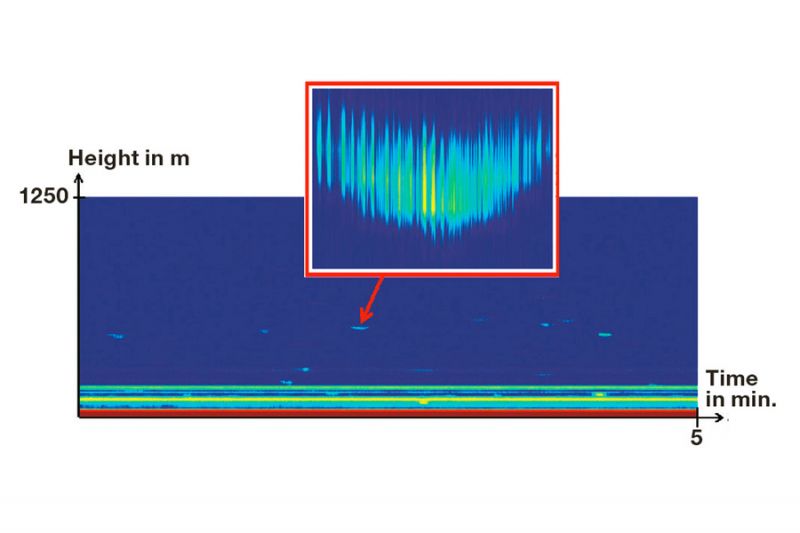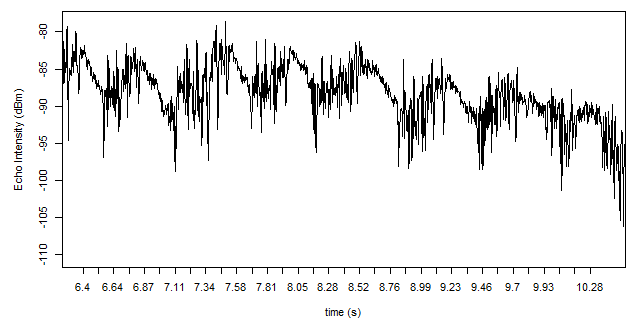How BirdScan systems acquire radar signals (echos) from aerial fauna
BirdScan detects migrating birds, bats, and insects by radar. Beams are emitted vertically from a static antenna across a conically-shaped field, using a wide aperture angle. The radar system emits a short pulse several hundred times per second and measures the echoes that it receives (pulse-echo method). The height of an object can be calculated from the time the echo needs to return.


The raw echo can be visualized as a height x time x intensity plot. Internally this stream of information is processed in real-time to detect multiple echos simultaneously. Each individual echo is then stored on the radar’s data-system together with its associated meta-data.
Echos are short signals which contain information of fluctuations in a target’s reflectivity. For birds and bats, the wing-flapping pattern is reconstructed from the signal by SBRS Analytics Modules. This information is exploited to classify targets (e.g. bird, passerine-bird, wader-bird, insect, ground-clutter) and to estimate the wing-flapping frequency.

Are you looking for a radar solution?
Tell us about your project. We are looking forward to hearing from you.
